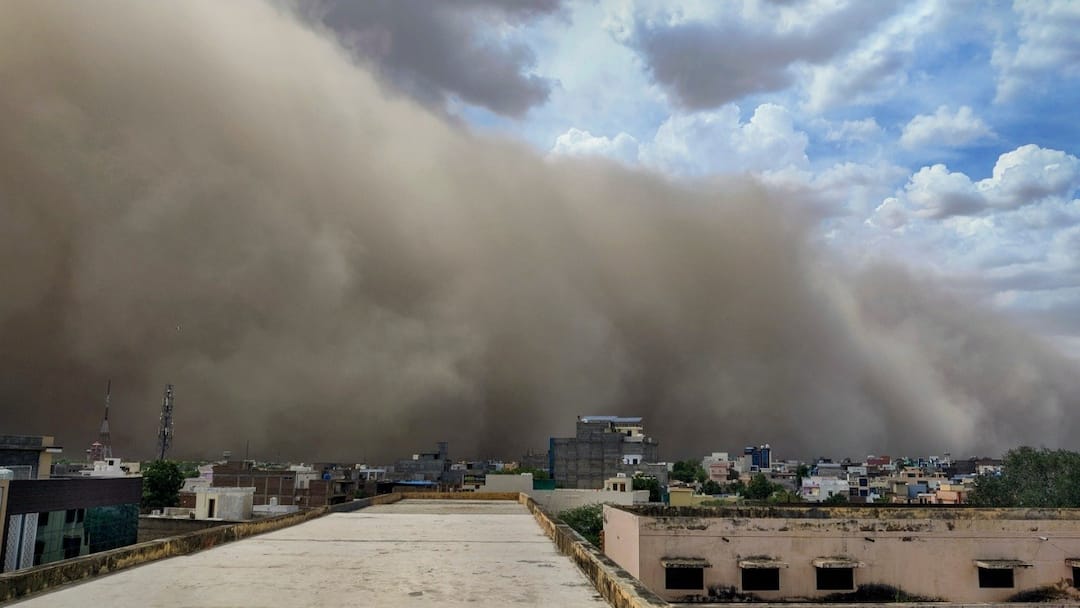As Dust Storms Batter Mumbai And Delhi, Know Major Causes Behind Increased Instances
Dust Storms in India: Frequent dust storms have disrupted lives, causing fatalities and infrastructure damage in India. The increased frequency is attributed to climate change and other related factors.

According to the United Nations, sand and dust storms have increased dramatically in frequency and intensity over the years. The UN Convention to Combat Desertification (UNCCD) terms sand and dust storms as an ‘underappreciated problem’, as per a Down To Earth report.
The UNCCD recognises the dramatic increase in the frequency of dust storms even in places that have them as a regionally common and seasonal natural phenomenon. However, UNCCD experts in their report add that the problem of fluctuations in their intensity or frequency can make them ‘unpredictable and dangerous’.
The recent dust storms followed by heavy unseasonal rainfall in parts of India might have provided relief from the scorching heat in some way but the winds are causing deadly damage to lives and property. In May, dust storms are expected to hit the northern parts of India but the rising frequency and destructive nature of these raise concerns. The recurrence of such storms is linked to various factors as per the government agencies and weather experts.
Dust Storm In Delhi, Mumbai, Gujarat
In a week’s duration, dust storms have created havoc at various places of India including both the national and financial capitals of India. Delhi was enveloped in sand on Friday, May 11, while Mumbai was struck with deadly winds followed by heavy rainfall. Other than Delhi and Mumbai, storm situations and unseasonal rains happened in parts of Gujarat as well.
According to the Police, a dust storm in Delhi claimed 2 lives, and 23 were injured. It uprooted around a hundred trees in the city. As per the officials, nine flights from the Delhi airport were diverted and were rerouted to Jaipur, reported PTI. The busy capital also witnessed traffic blockages at various places.
The Mumbai dust storm yesterday turned out to be a fatal incident as the falling of a giant billboard at a Ghatkopar fuel station killed 14 people and caused injury over 70 persons, PTI reported citing the police.
Flight and other commuting services were also affected. Several flights were diverted due to air traffic congestion caused by bad weather. Airlines, such as Indigo, SpiceJet, and Vistara disseminated information about the delays and diversions through their X handles. Also, trains and buses were either suspended or diverted.
In Gujarat, there was a sudden change in weather on Monday evening. Dust storms accompanied by light rainfall caused problems to the commuters returning home from work as the visibility was also hampered during this time. According to a report by The Hindu, Ahmedabad was first battered by a dust cyclone followed by heavy rain and thunderstorms. Heavy rains arrived after the storm in Gandhinagar as well. Several billboards and trees were damaged in both cities after the dust storm affected visibility, the report stated.
How Is A Dust Storm Caused?
Very strong winds cause dust storms in the summers, usually after a period of drought. They usually happen in places that have exposed soil due to a very small number of trees and plants. A combination of arid conditions and high wind speeds cause the suspended sand particles to become loose. When wind builds up momentum in such areas the dust is accompanied by it, causing a dust storm.
However, a rise in the frequency of such storms is often related to climate change.
Why Have Dust Storms Increased In Frequency In India?
Desertification and drying riverbeds are some of the major causes of increased dust storm frequency in India. Both factors are linked to climate change.
Desertification is caused due to deforestation, or overgrazing. This results in climate change and also loosens the soil. Desertification is the reason that exposes the soil and makes it ‘defenseless’ against the wind to get carried away by it.
Other than that, climate change and overconsumption, followed by several other factors have resulted in the drying up of riverbeds. It again reduces water flow in rivers and exposes large areas of dry sand.
Apart from that, the Arabian Peninsula is a dryland and is often linked to airborne dust. The drylands must be responsibly managed in order to avoid the sudden rise infrequency of dust storms.




























